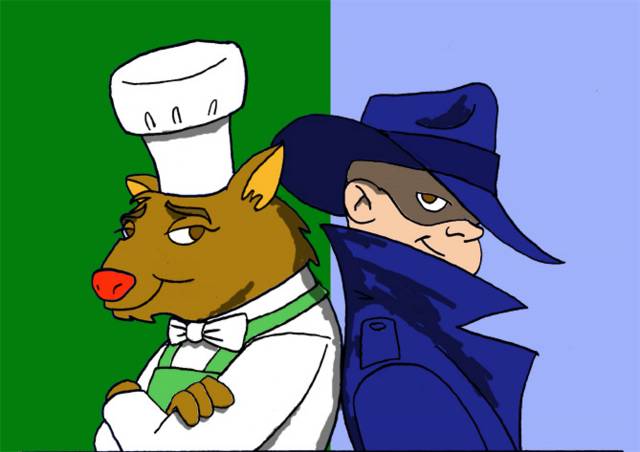Thoughts on Stir-Frying
I made a stir-fry for supper today. Nothing particularly special: beef, broccoli, carrot, celery, baby corn, onion. I made enough to last out the week.
Most Chinese cookbooks, and more than a few web resources (for example, here) can tell you all about the technique. I just thought I'd put down a few amplifying thoughts:
1. Contrary to popular belief, you don't need an actual wok to do a good stir-fry. A few years ago, when I went car camping for the weekend, I used the big pot of a T-Fal camping set to stir-fry some bell peppers with ginger and garlic. Worked great. Any high-sided skillet (with sides more than an inch high) will work for a stir-fry, if you don't have a wok.
2. Generally, fresh vegetables work much better than frozen in a stir-fry. Frozen vegetables have liquid in them, and when the liquid thaws, it does something to the vegetable tissue that makes them soggy. It's especially noticeable for larger cut veggies like broccoli and carrots, but is less of a factor for smaller ones like peas. A good stir-fry leaves the vegetables tender but still with a bit of a crunch to them.
3. Meats for stir-frying should be marinaded. A good marinade will tenderize the meat and let it cook fully without going dry. It's a good idea to use a marinade that doesn't impart a strong flavor, which is why a red wine marinaded is a no-no.
4. The ideal size for cutting ingredients should be such that you can pick up an individual piece with a chopstick or fork and stick it in your mouth without undue distortion in the cheeks.
5. If you want to use noodles with your stir-fry but can't get fresh Chinese-style egg noodles, then thin pastas like vermicelli or capellini/capelli d'angelo (angel's hair) will work just fine. When using dried pasta, break it into 6-inch lengths before you boil it; when the pasta is al dente and ready, drain and toss into the wok, mixing with the stir-fry just before serving.
6. Fresh ginger is preferable to the powdered kind, but the shredded stuff in a jar will work okay in a pinch.
7. An electric stove doesn't heat up at the same temperature as a natural-gas stove. Which means it'll take a few minutes longer for an electric to heat the wok to the ideal stir-frying temperature.
8. Speaking of heat: if you're planning on buying a non-stick wok, read the packaging carefully. If you see a warning that says not to use maximum heat, don't buy the wok; you want the thing to take the highest setting on your stove.

